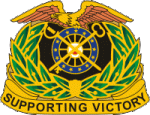The development of PERT and CPM as Mainframe software systems starting in 1957 is well documented with contemporary accounts from the key people involved readily available. What is less clear is how two systems developed contemporaneously, but in isolation, as well as a number of less well documented similar systems developed in the same timeframe in the UK and Europe came to have so many similar features. These early tools used the ‘activity-on-arrow’ (AoA or ADM) notation which is a far from obvious model. Later iterations of the concept of CPM used the ‘precedence’ notation which evolved from the way flow-charts were and are drawn.
One obvious connection between the early developments was the community of interest around Operation (or Operational) Research (OR) a concept developed by the British at the beginning of WW2. OR had developed to include the concept of linear programming by the mid-1950s which is the mathematical underpinning of CPM, but while this link explains some of the cross pollination of ideas and the mathematics it does not explain terms such as ‘float’ and the AoA notation (for more on the development of CPM as a computer based tool see http://www.mosaicprojects.com.au/PDF_Papers/P042_History%20of%20Scheduing.pdf).
A recent email from Chris Fostel, an Engineering Planning Analyst with Northrop Grumman Corporation (CFostel@rcn.com) appears to offer a rational explanation. I’ve reproduced Chris’ email pretty much verbatim below – the challenge posed to you is to see if the oral history laid out below can be corroborated or validated. I look forward to the responses.
Chris’ Oral History
 I was told this story in 1978 by a retired quartermaster who founded his own company after the War to utilize his global contacts and planning skills. Unfortunately the individual who told me this story passed away quite a few years ago and I’m not sure any of his compatriots are still alive either. Regardless, I thought I should pass this along before I join them in the next life. I do not wish to minimize the work of Kelly and Walker. They introduced critical path scheduling to the world and formalized the algorithms. They did not develop or invent the technique.
I was told this story in 1978 by a retired quartermaster who founded his own company after the War to utilize his global contacts and planning skills. Unfortunately the individual who told me this story passed away quite a few years ago and I’m not sure any of his compatriots are still alive either. Regardless, I thought I should pass this along before I join them in the next life. I do not wish to minimize the work of Kelly and Walker. They introduced critical path scheduling to the world and formalized the algorithms. They did not develop or invent the technique.
The origin of critical path scheduling was the planning of the US Pacific Island hopping campaign during World War II. The Quartermaster Corps coordinated orders to dozens if not hundreds of warships, troop ships and supply ships for each assault on a new island. If any ships arrived early it would alert the Japanese of an imminent attack. Surprise was critical to the success of the island hopping campaign. The US did not have enough warships to fight off the much larger Japanese fleet until late in the war. Alerting the Japanese high command would allow the Japanese fleet to intercept and destroy the slow moving US troop ships before they had a chance to launch an attack.
Initially the quartermasters drew up their plans on maps of the pacific islands, including current location and travel times of each ship involved. The travel times were drawn as arrows on the map. Significant events, personnel or supplies that traveled by air were shown as dashed lines hopping over the ship’s arrows. The quartermasters would then calculate shortest and longest travel times to the destination for all ships involved in the assault. The plans became very complicated. Many ships made intermediate stops at various islands to refuel or transfer cargo and personnel. The goal was to have all ships arrive at the same time. It didn’t take the quartermasters long to realize that a photograph of the planning maps would be a devastating intelligence lapse. They started drawing the islands as identical bubbles with identification codes and no particular geographical order on the bubble and arrow charts. These were the first activity on arrow critical path charts; circa 1942.
The only validation I can offer you is that by now you should realize that activity on arrow diagrams were intuitive as was the term ‘float.’ Float was the amount of time a particular ship could float at anchor before getting underway for the rendezvous. Later when the US quartermasters introduced the technique to the British for planning the D-Day invasion the British changed float to “Slack”, to broaden the term to include air force and army units which did not float, but could ‘slack off’ for the designated period of time.
You will not find a written, dated, account of this story by a quartermaster corps veteran. Critical path scheduling was a military secret until declassification in 1956. In typical fashion, the veterans of WWII did not write about their experiences during the War. No one broke the military secrecy. After 1956 they were free to pass the method on to corporate planners such as Kelly and Walker. A living WWII Quartermaster veteran, should be able to provide more than my intuitive confirmation.
This narrative makes sense to me from a historical perspective (military planning has involved drawing arrows on maps for at least 200 years) and a timing perspective. Can we find any additional evidence to back this up?? Over to you!








